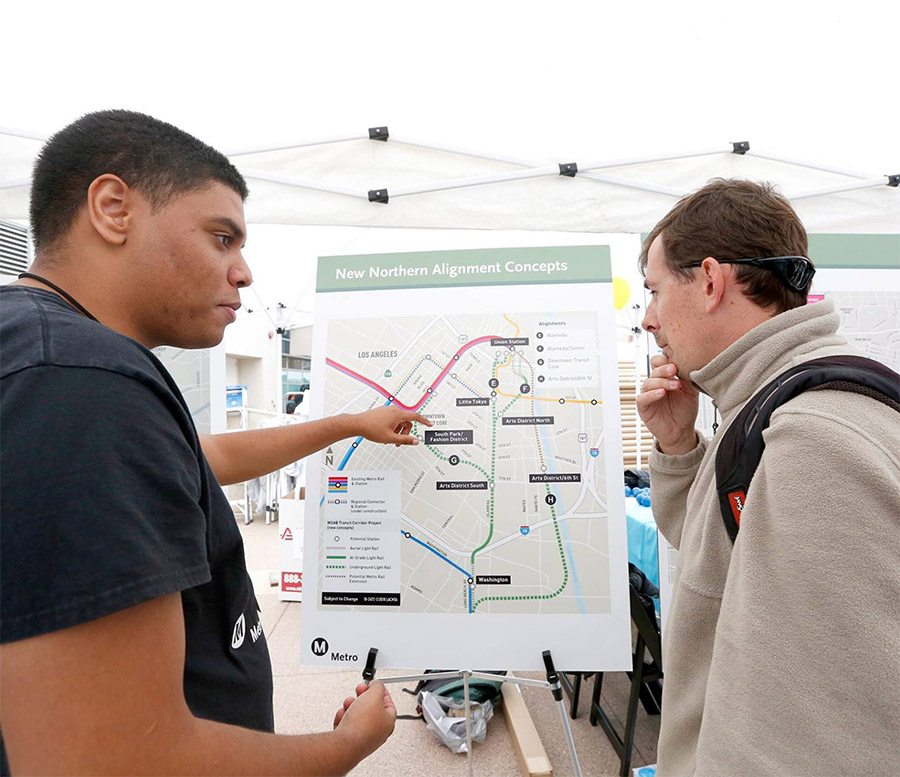
Do New Mobility Options Mean More Affordable Cities?
New technologies are changing how people get around. In cities around the world, cars, bikes, scooters, and even pogo sticks can be only a few taps on a smartphone screen away. Of all these modes, Transportation Network Companies (TNCs) like Uber, Lyft, and Via are the most prominent. Here in Chicago, the number of active TNC drivers has grown from 15,000 in March 2015 to nearly 68,000 in 2019. In March 2019, over 10 million TNC trips took place in Chicago, with pickups and drop-offs in... Read the rest of this entry »
What eTOD Plans Need to Consider
Since its inception, CNT has pioneered sustainable, equitable, and growth-oriented solutions that reimagine how cities think about transportation and land use. One area of work is equitable transit-oriented development (eTOD), which helps underserved communities tackle affordability, meet transportation needs, and decrease climate change impacts. In light of increased community interest in walkable, connected environments, CNT recently hosted a series of workshops addressing pertinent eTOD... Read the rest of this entry »
New Mayor, New Mobility
The transportation sector is changing rapidly: growth in rideshare services (e.g. Uber, Lyft, and bikeshare), vehicle electrification, and introduction of autonomous vehicles will together lead to a complete re-imagining of our transportation system. New mobility options create new opportunities, but also the potential to widen disparities by income and race – unless we explicitly plan for equity. For that reason, the Center for Neighborhood Technology (CNT) participated on Chicago’s New... Read the rest of this entry »
Chicago’s Latest Ordinance Expands eTOD
On January 23, 2019, the Chicago City Council passed an amendment to the Municipal Code governing transit-oriented developments (TODs). This amendment modifies transit-served locations to include projects in vicinity of more than 20 CTA-designated high-ridership and high-frequency bus routes along eight1 major corridors and corridor segments. With this amendment, the City administration will also have to create and publish an Equitable TOD (ETOD) Implementation Policy Plan over the next year... Read the rest of this entry »
Welcoming Elizabeth Irvin as Transportation Director
I’m happy to welcome CNT’s newest staff person, Elizabeth Irvin, who starts work with us today as our Transportation Director. Elizabeth joins us from the Chicago Metropolitan Agency for Planning (CMAP), where she worked on evaluating the impacts of road and transit projects, identifying opportunities and risks of emerging transportation technologies, and advancing strategies to improve equity and sustainability in the region’s transportation system. She previously worked for Metro Boston’s... Read the rest of this entry »
We Met, We Shared, and Together We Innovate!
On Tuesday, December 4, CNT opened our offices to partners and friends both old and new. We rearranged our space to display our current work – see diagram below – and spent three nonstop hours describing it. Around 150 people came through (we weren’t keeping close count), talked to our staff and board about our priorities and projects, and connected with other friends. Most commonly overhead conversation snippets at the open house: I really like that AllTransit tool. (Thanks,... Read the rest of this entry »
Powerful New Opportunity Zone Scoring Uses CNT’s True Affordability Tool
This just in—a new tool addressing the promise and challenges in using Opportunity Zones (OZs) to drive development in underserved urban areas. The National Opportunity Zones Ranking Report was produced by LOCUS in conjunction with Smart Growth America and SPARCC – a national network rooted in Atlanta, the SF-Oakland Bay Area, Chicago, Denver, Los Angeles, and Memphis to accelerate equitable development without displacement, climate resilience and public health achievement.... Read the rest of this entry »
Red Line Extension would bring major economic benefits to Far South Side
By Julia Gerasimenko, Active Transportation Alliance People who scoff at the significant cost of the Red Line Extension ($2+ billion) shouldn’t overlook the significant social and economic benefits it would deliver to several of the most isolated and disinvested communities in the city. New analysis using the Center for Neighborhood Technology’s AllTransitTM tool puts numbers behind these benefits. Funded by TransitCenter, the tool allows users to enter an address and discover the... Read the rest of this entry »
CNT and King County Metro Announce the Release of rightsizeparking.org v2.0
The Center for Neighborhood Technology (CNT) and King County Metro have released an update to rightsizeparking.org. This update uses new data collected over the past year at 75 multifamily properties around King County, making the parking use model more robust, supported by a count of actual parking use in the middle of the night. Now, along with all the features of the previous version, a user can vary the proposed multifamily housing development’s parking supply and see how that affects the... Read the rest of this entry »
Community Affordability, Part II
I recently had the honor to sit down with Ben Brown from PlaceMakers to talk about Community Affordability in the PlaceMaker’s blog “PlaceShakers and Newsmakers” CNT has had a long relationship with PlaceMakers, a planning and design firm that works in the United States and Canada. Ben and I spoke about affordability and place, in advance of the Congress for New Urbanism 2018 Conference to be held May 15-19, 2018. Follows is the beginning of Part II of our conversation about... Read the rest of this entry »





 Strengthening Transit Through Community Partnerships
Strengthening Transit Through Community Partnerships








